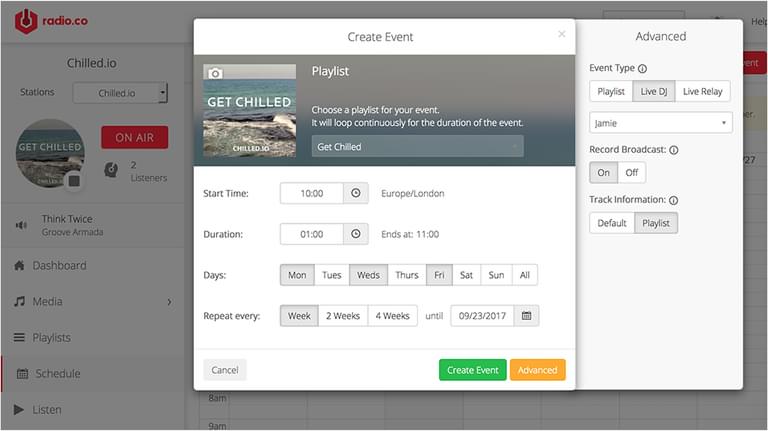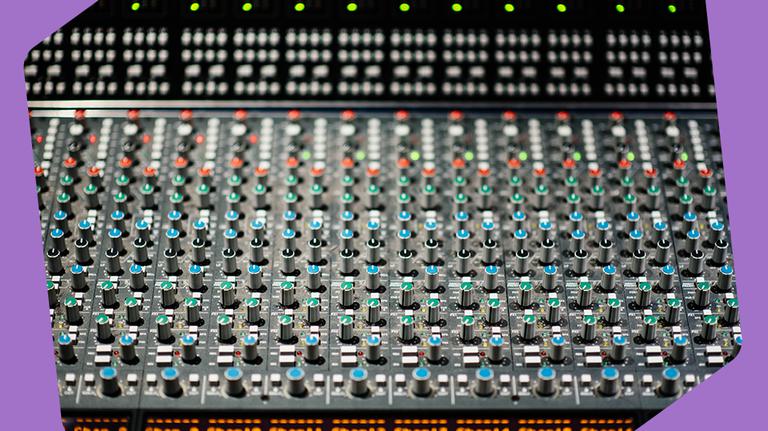Need advice? Let's talk.
Get straightforward guidance from your broadcasting partner. Schedule a call to chat with the team about your radio station.
Book DemoThe Why and How of Radio Programming
Radio programming is an art form. Master it by crafting compelling content so your shows flow better and listeners stay tuned for longer.
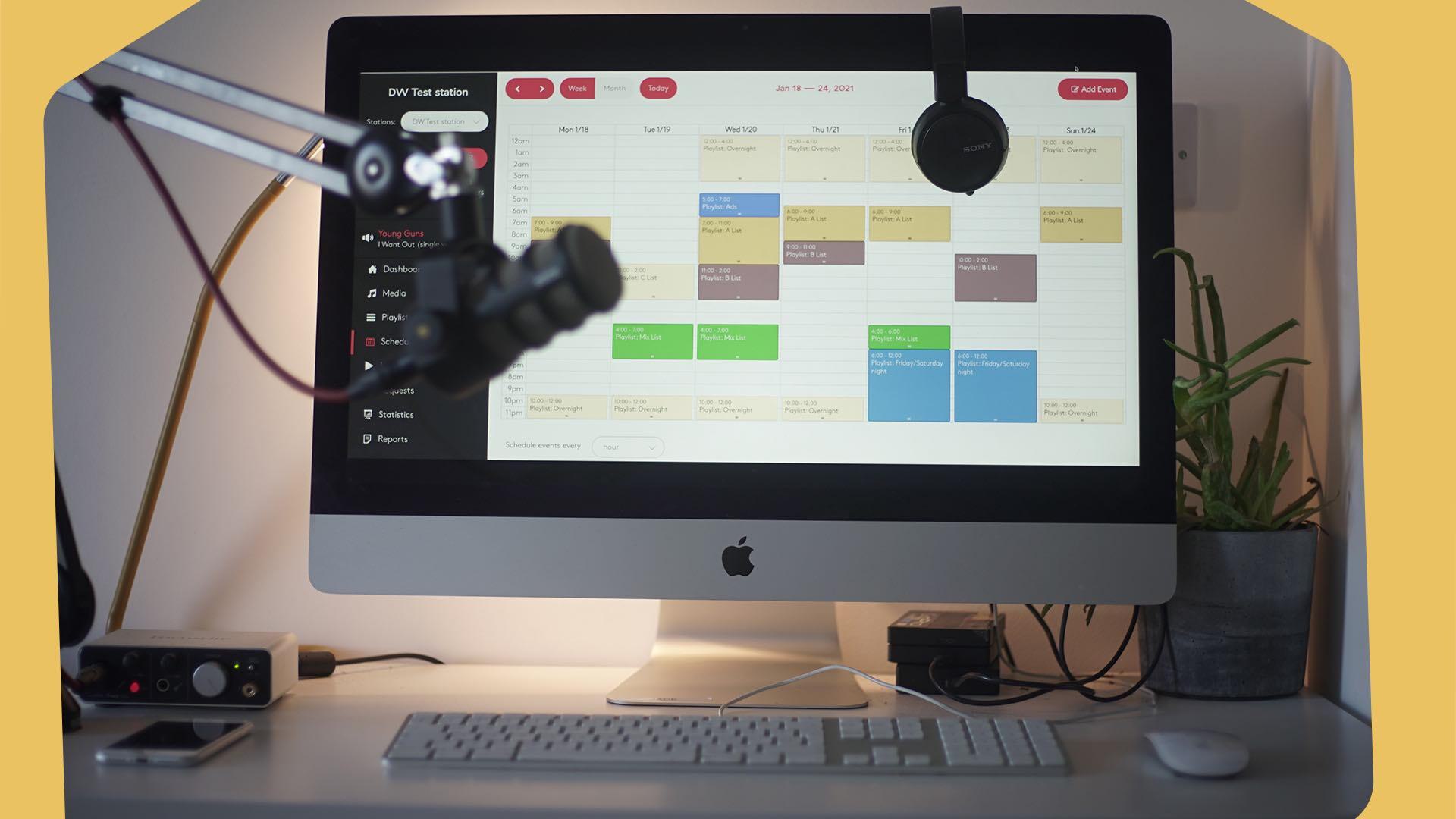
Weaving good content together takes finesse. When done properly, you won’t even notice. As a broadcaster, keeping listeners hooked is your main bread and butter. But that takes practice. Hone your skills by getting to know the building blocks of radio programming. And use Radio.co to create and manage your shows with ease.
Why You Need Good Radio Programming
When people tune into your station, what do they expect to hear? That’s the question you need to answer with your radio programming.
If they tune in and aren’t getting what they want they aren’t going to stick around for very long. Your programme schedule can solve that problem.
In the UK, the BBC has helmed successful radio stations for years. Since the ’60s they’ve been attracting hundreds of thousands of listeners and part of that success is down to their radio programming. Stations like BBC Radio 4 are well-oiled machines after decades in the industry. Check out the BBC Radio 4 schedule to see how to structure good radio programming.
Here are some of the benefits of good radio programming:
- Listeners know when to tune in to get the content they want.
- Listeners are encouraged to stay tuned and listen to shows they wouldn’t try otherwise.
- Avoid songs clashing or being played over and over again.
You may think ‘I don’t need to plan’, but good radio programming isn’t just good for your audience, it’s beneficial for you too.

By organising your radio programming, you;
- Set deadlines for yourself that keep you motivated.
- Create a template for your future programming, so there’s less work in the long term.
- Make time to produce new content, develop ideas for your station or just live your life outside of running a station.
You work best when you're working towards an attainable goal. Planning your programmes out in advance gives you a series of ‘mini-tasks’ to achieve that will keep you motivated. ‘Find 5 new songs for next week's show’ is a much easier goal to complete than ‘run a radio station’.
Types of Radio Programming
There are broad general categories that programming can be broken down into to make life easier. Sprinkling different types of content throughout the day keeps your station dynamic and stops shows blending together.
Types of radio programming worth considering are:
- Morning Breakfast: Shows to get your listeners energised and ready for the day ahead of them. Typically features popular songs and friendly chatter.
- News & Weather: Does what it says on the tin. You can adapt these regionally, depending on where you broadcast from and whether you want to cover local news, national news or a mix of both.
- Genre Specific: Dedicate an hour or two to a specific genre of music. These should be placed on your schedule away from prime time slots like breakfast and lunch, as they’re only going to attract fans of that genre.
- Talk: A host or two discuss current affairs and world news. Can include phone-ins from listeners to share their perspectives.
- Sports: Reporting the latest sports results and commentary. You can licence relays to broadcast live sports commentary as it’s happening.
These are just a few examples. There’s a wealth of untapped creative possibilities outside of these simple programme ideas, so experiment and see what works for you.
Understanding Listeners with Personas
A classic broadcasting technique that helps your listeners connect with your content is personas. A persona is an amalgamation of the traits and interests you expect in your listeners, moulded together into one imaginary person, your ‘ideal listener’.
You can attach a wide range of characteristics onto your personas, but the generation they were born into is one of the most important:
- Baby Boomers: Born between 1946 and 1964.
- Gen X: Born between 1965 and 1980.
- Gen Y/Millennials: Born between 1981 and 1996.
- Gen Z: Born between 1997 and 2015.
Think about what someone from a particular generation likes and dislikes and how these opinions are shaped by the decades they grew up in. For example, someone who lived through the ’40s may not be familiar or interested in new technology and wouldn’t want to hear a load of technical jargon as part of their afternoon radio show. The characteristics you give your personas can be based on generalisations, as they represent a demographic made up of thousands of individual tastes and opinions.

BBC Radio 4 often broadcast radio plays and documentaries. You might expect them to attract an older audience with a longer attention span. As a result, their persona fits into the Gen X category, with all of their likes and dislikes mapped out. Having this persona lets Radio 4 tailor their content to the ideal listeners taste. Some hosts even have sketches of these personas stuck next to their computer screen or microphone, so they can talk to them directly, which is a technique you could try out on your station.
Creating Listener Personas
To craft your ideal listener, you need to think about the types of people you want your content to attract. With Radio.co it’s easy to see where your listeners are tuning in from just from your station’s Dashboard.
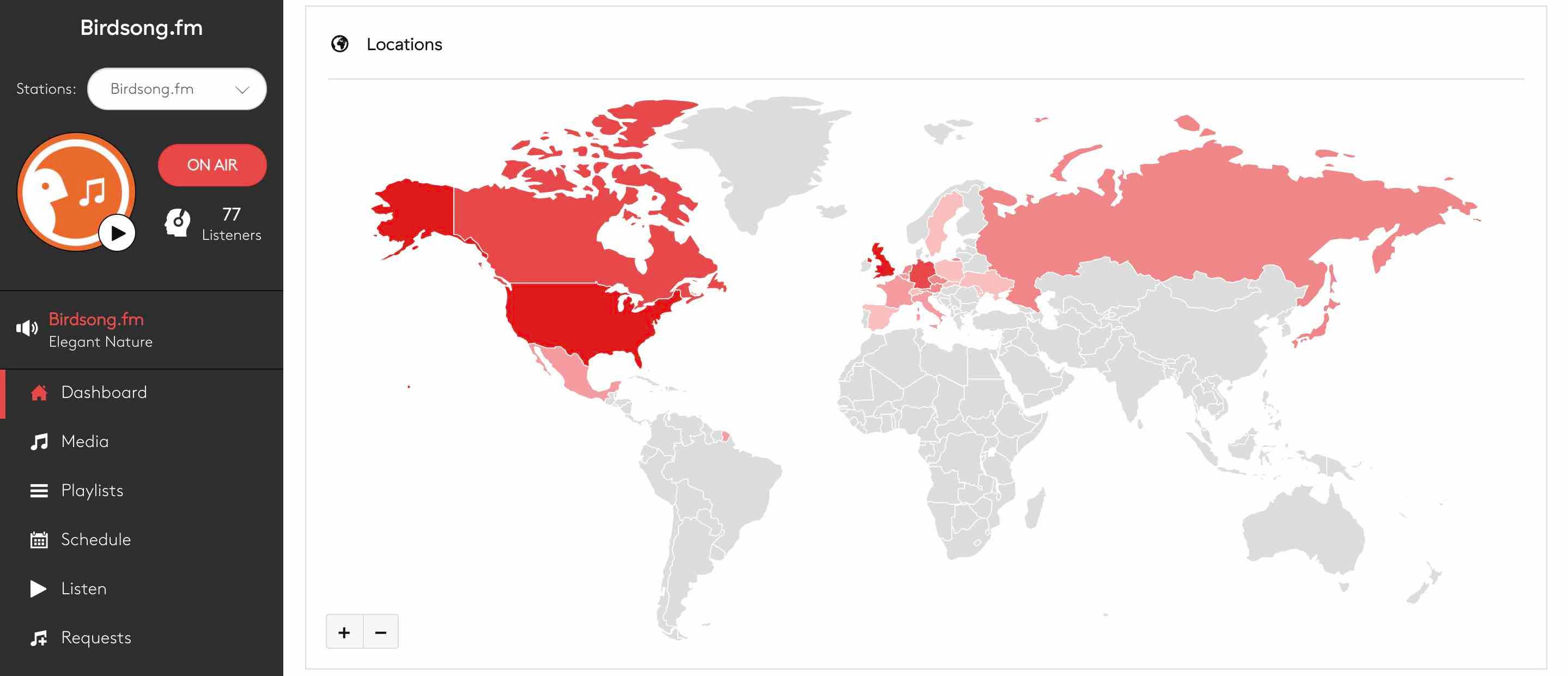
Just basic info won't cut it though, the most important information for a well-rounded persona is;
- Demographic Information: Where they live, where they were born, their age, their ethnicity, general ideas about their income, their marital status and whether they have kids or not.
- Personal Characteristics: How they conduct themselves day to day, their opinions, likes and dislikes.
- Goals and Aspirations: What do they intend to achieve in the future? What are they doing now? What are they working towards at the moment?
- Behavioural Patterns: What do they spend their time doing? Do they see friends often, or are they isolated? Do they spend time online or reading a book? How do they spend their free time?
You can streamline this process if you speak directly to your listeners at events or take phone-ins as part of your shows. You can ask people what they like and dislike about your station. Ask when they tune in and how long for, see what they think would keep them around for longer periods.
Difficult as it is, try to take criticism as feedback that helps you adjust and improve things. If you say something they don’t like, avoid it next time, if you play a song they really enjoy, try playing more songs like that. If you know a majority of listeners tune in at certain times of the day, schedule your shows around those people so they don’t end up tuning out.
Once you understand your audience, you can fine-tune your radio programming to suit them.
Choosing the Right Time (& Content)
Even when you’ve identified your ‘ideal listener’, you’re going to have plenty of people tuning in who are looking for a specific kind of experience depending on the time of day.
When something broadcasts is important and the time of day dictates lots of little factors you may not normally consider that build up to make a big difference. Understanding these broad rules increases your chances of catching listeners and hooking them so they stick around for the day.
Breakfast: AKA Early Bird
Between 7am-10am, breakfast is when more listeners tune in than at any other time of the day, so you’ve gotta catch them and hook them quickly, before they start surfing for other stations. If you get them early, they’re more likely to stick around.
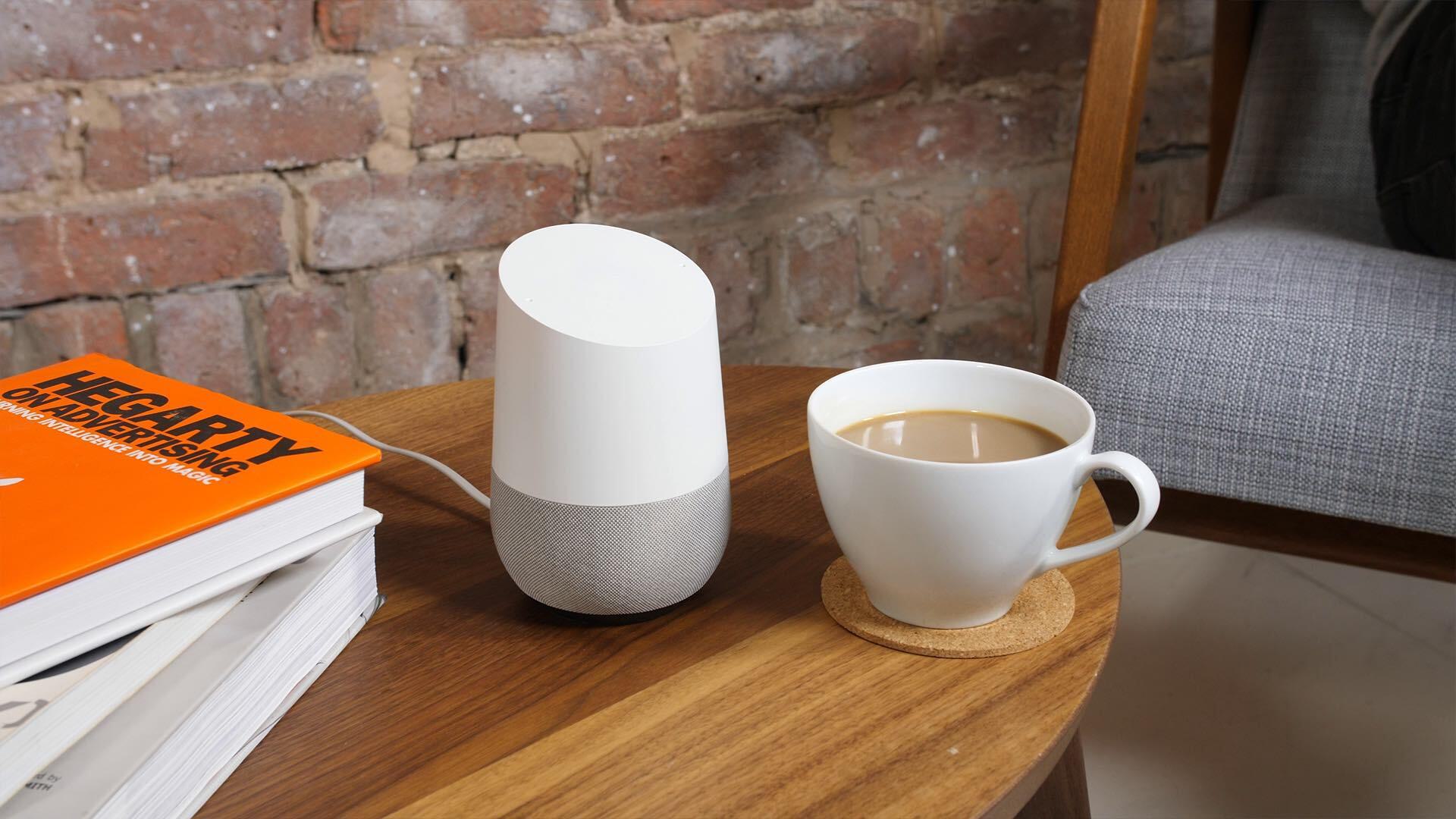
Early in the morning, people won't be after anything complex or difficult to listen to, so maybe shy away from hard-hitting war documentaries or anything that’ll put people off their cheerios. Morning content should be light, breezy and energising, with a host that reflects that.
Your morning host is the most important presenter on your station. They’re who most of your listeners will tune in to and they determine who sticks around. Your morning presenter should carry the show and guide the listener while entertaining and waking them up, so make sure that this position goes to your most talented presenter.
Lunch: AKA Worker Bee
Similar to breakfast, lunch is when people will be tuning back in partway through their workday. It’s not as specific as breakfast, but could be anywhere between 11.30am and 1.30pm. People are going to be stressed at this sort of time, so you’ll need light content to avoid them tuning out.
Stick to uplifting content around this time similar to what plays at breakfast; popular songs and friendly banter.
Drive Time: AKA Homebound Pigeon
Drive Time is typically between 4pm-6pm and, as you can imagine, is when most listeners will be taking their evening commute home and getting stuck in traffic. You can afford to be a bit less lighthearted in drive time shows, as listeners are more switched on after a full day's work.

However, they are also likely to switch between stations on their car radio regularly, making it hard to keep their attention. So while you can be more serious, it needs to be in bite-sized chunks of content, interspersed with popular, attention-grabbing songs and varied features.
Evening and Night Time: AKA Night Owl
Anything after Drive Time is more relaxed, you’re able to feature more specialised content, such as news and talk shows, genre-specific music shows and local content.
Use this time wisely, as it’s a chance to both broaden your audience with targeted content and encourage locals and businesses to participate. This is especially important for community stations, who live or die on local support.
Anything outside of these times is fair game, so feel free to fit more specialised content between Breakfast, Lunch and Drive Time.
Putting it All Together
Radio programming is like a puzzle: everything comes together to create something greater than the sum of its parts. Every show is a piece of that puzzle and you're in charge of putting it together. With knowledge of your listener's interests and daily patterns, you can shape your programming to produce a captivating station no one will tune out from.
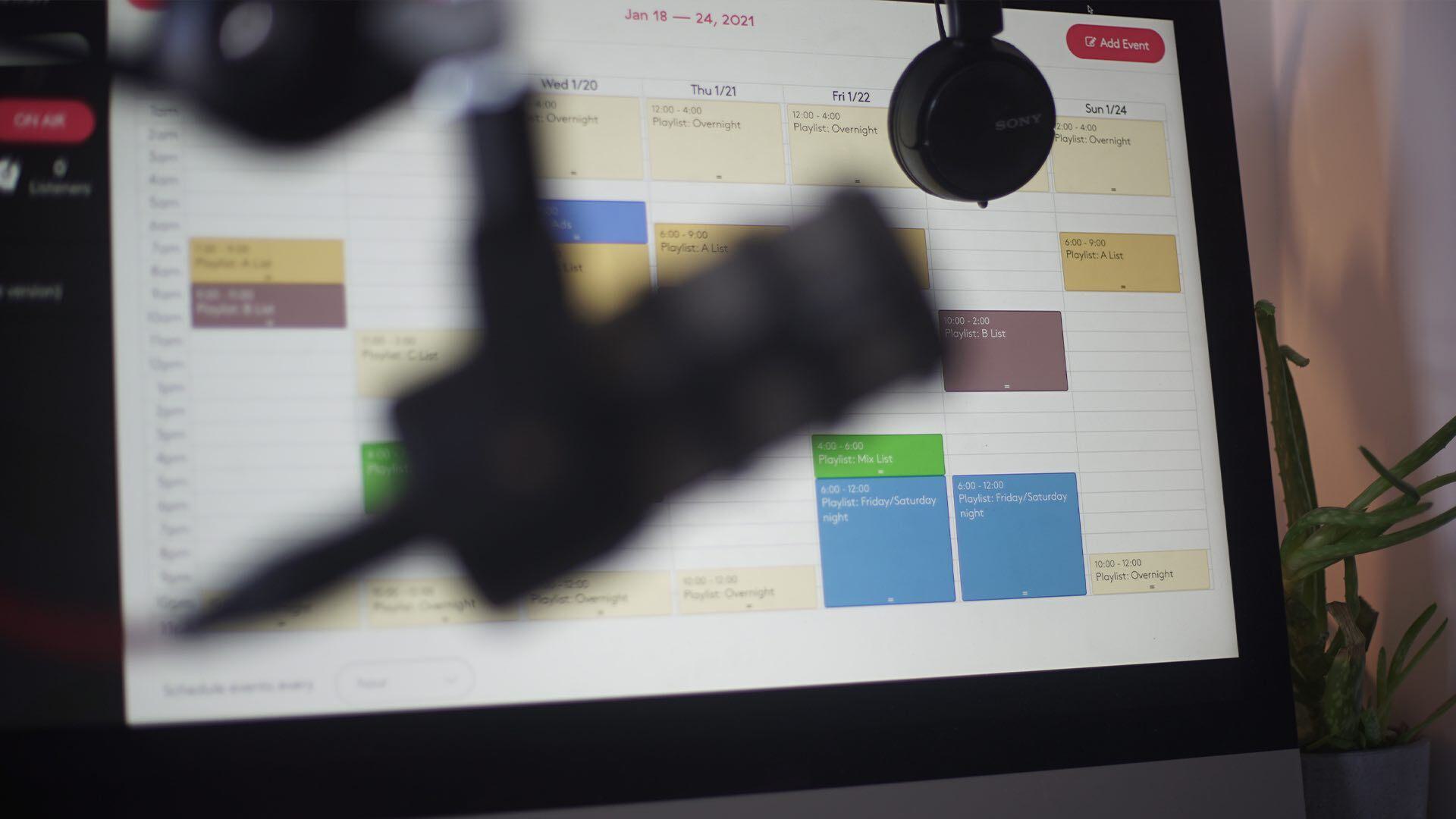
Radio Programming: It’s All About Your Listeners
Knowing the theory is one thing, but putting it into practice is where you put your skills to the test. With Radio.co’s intuitive and user-friendly interface and tools, you don’t have to get to grips with unwieldy systems to craft stellar radio programming content. But why not try it out yourself. Start your 7 day free trial to see how Radio.co can work for you.

